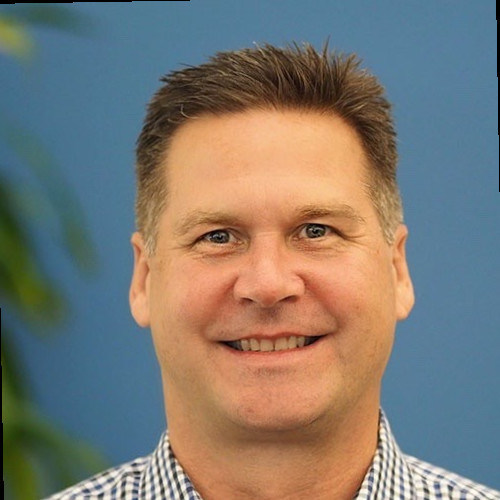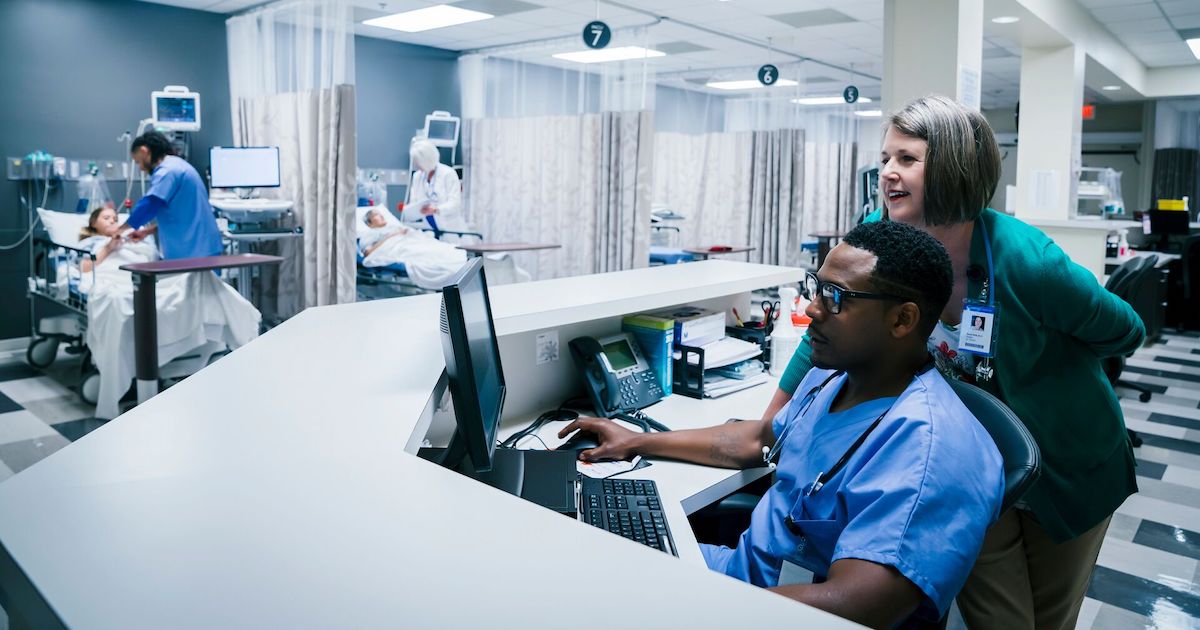更新于:2024-11-01
University of St. Thomas
更新于:2024-11-01
概览
关联
2
项与 University of St. Thomas 相关的临床试验Efficacy and Mechanisms of Combined Aerobic Exercise and Cognitive Training (ACT) in MCI
This multi-site clinical trial occurs at the University of Minnesota and University of Rochester. It tests the efficacy and additive/synergistic effects of an ACT intervention on cognition and relevant mechanisms (aerobic fitness, Alzheimer's disease [AD] signature cortical thickness, and default mode network [DMN]) in older adults with amnestic MCI (aMCI).
开始日期2018-07-05 |
申办/合作机构 |
Aerobic Exercise in Alzheimer's Disease: Cognition and Hippocampal Volume Effects
This randomized controlled trial (RCT) will investigate the effects of a 6-month, individualized, moderate-intensity cycling intervention on cognition and hippocampal volume in AD with three aims:
Determine the immediate effect of the cycling intervention on cognition in AD.
Examine if the cycling intervention slows cognitive decline in AD from baseline to 12 months.
Assess the effect of aerobic exercise on hippocampal volume in AD over 12 months using MRI.
The investigators will randomize 90 participants to the 6-month cycling or stretching/range of motion exercise (20-50-minute, 3 times a week). Participants will then be followed for another 6 months. Cognition will be assessed at baseline, 3, 6, 9, and 12 months and hippocampal volume will be measured using magnetic resonance imaging (MRI) at baseline, 6, and 12 months.
Determine the immediate effect of the cycling intervention on cognition in AD.
Examine if the cycling intervention slows cognitive decline in AD from baseline to 12 months.
Assess the effect of aerobic exercise on hippocampal volume in AD over 12 months using MRI.
The investigators will randomize 90 participants to the 6-month cycling or stretching/range of motion exercise (20-50-minute, 3 times a week). Participants will then be followed for another 6 months. Cognition will be assessed at baseline, 3, 6, 9, and 12 months and hippocampal volume will be measured using magnetic resonance imaging (MRI) at baseline, 6, and 12 months.
开始日期2014-03-01 |
申办/合作机构 |
100 项与 University of St. Thomas 相关的临床结果
登录后查看更多信息
0 项与 University of St. Thomas 相关的专利(医药)
登录后查看更多信息
1,676
项与 University of St. Thomas 相关的文献(医药)2024-12-31·Water Science
The effect of gabion steps on the hydraulic jump characteristics downstream of stepped spillways
作者: Sadeghi, Hojjat ; Ghaderi, Amir ; Abraham, John Patrick ; Daneshfaraz, Rasoul
2024-11-16·Philosophical Psychology
What is virtue? Using philosophy to refine psychological definition and operationalization
作者: Jeffrey, Anne ; Ratchford, Juliette L. ; Pawl, Timothy ; Schnitker, Sarah A.
2024-11-01·Journal of Adult and Continuing Education
Understanding student perceptions and motivations in non-traditional online degree completion programs: An exploratory case study
作者: Watson, Susan ; Ketron, Seth ; Fulton, Kara
9
项与 University of St. Thomas 相关的新闻(医药)2022-12-16
Jeffrey Sirek selected to serve as CEO with intention on continuing company's impressive growth
TORRINGTON, Conn., Dec. 16, 2022 /PRNewswire/ -- PRIA Healthcare (PRIA), a leader in technology-enabled Market Access services that accelerates the adoption and rapid commercialization of innovative healthcare devices and procedures, is elated to announce Jeffrey Sirek as the new CEO. Mr. Sirek brings to PRIA a wide range of leadership experience and a history of successfully building and sustaining high-growth MedTech commercial teams. With over 25 years of experience in both product and service management positions with Publicly held companies and Private Equity-backed businesses, he is the ideal candidate to spearhead PRIA's next stage of growth. Most recently, Mr. Sirek served as CCO of iCad, where he oversaw the companies' commercial efforts of a disruptive AI Technology and Radiation Therapy product.
Continue Reading
Jeffrey Sirek, new CEO at PRIA Healthcare
PRIA is a differentiated, tech-enabled service led by industry veterans whose rapid growth has enabled the successful commercialization of new products for Medical Device Startups and Fortune 100 companies. Their primary mission is to partner with medical device companies, healthcare providers, and healthcare organizations to ensure that patients are afforded appropriate coverage for the care that they are prescribed. "I have always been drawn to growth-stage companies and expanding teams. PRIA is a very special opportunity, with the backing and support of Aldrich Capital Partners, to build a world-class brand in the patient-access space. We have such incredibly hardworking, patient-centric and intelligent people on our team, I believe we can expand quickly to grow into this vast, underserved market." Stated Sirek, "I know the best days are ahead at PRIA and I am excited to work closely with the leadership team and Aldrich to establish our strategy and to set clear objectives so we can all execute on our goals." Aldrich's Managing Partner, Raz Zia, said, "We are thrilled to have Jeff lead the PRIA team into this next phase of the company. We are confident in his visionary leadership, commercial expertise, and his ability to successfully drive organic and inorganic strategy, while maintaining an innovative and collaborative culture."
PRIA will leverage Sirek's extensive experience in MedTech operations to drive innovation for both current and future customers as PRIA continues to expand its suite of products and services that support the commercialization process. Sirek grew up in St. Paul Minnesota, graduating from the University of Saint Thomas with a Bachelor's degree in Finance. He resides in Newburyport, Massachusetts.
About PRIA Healthcare: Offering Strategic Reimbursement consultation services and Patient Access Solutions to MedTech companies to properly navigate commercialization of new treatments, devices, and innovative therapies, PRIA is a wave-maker in the healthcare arena. The mission, vision, and values of PRIA revolve around patients and liberating newer, safer, and more effective technologies as prescribed by healthcare providers. PRIA advocates on behalf of each patient to overturn insurance denials and negative coverage decisions primarily made by insurance companies. Working hand-in-hand with physicians, and healthcare organizations, PRIA champions for positive coverage and approvals on a case-by-case basis to ensure the treatments prescribed by healthcare providers for the patient's disease state gain insurance coverage, ultimately improving quality of life and positively impacting the overall patient experience. In just 5 short years, PRIA has quintupled in size and shows no signs of deceleration with Mr. Sirek leading the charge. For more information, visit .
CONTACT: Marie Austin [email protected] 860-516-1548
SOURCE PRIA Healthcare

高管变更
2022-11-15
Venture capital firm General Catalyst announced a slew of new health system partners on Tuesday, bringing its total number of collaborators in the U.S. to 14.
The 10 new partners include Banner Health, Cincinnati Children's Hospital Medical Center, Hackensack Meridian Health, Health First, MetroHealth, OhioHealth, the Medical University of South Carolina (MUSC), UC Davis Health, UC Irvine Health and Universal Health Services (UHS).
General Catalyst had previously revealed partnerships with WellSpan Health, Jefferson Health, Intermountain and HCA as well as Guy's and St Thomas' NHS Foundation Trust in the UK. The VC aims to work with these health systems to determine areas for innovation, then co-invest in or build health tech companies.
Daryl Tol, General Catalyst's head of health assurance ecosystem, told MobiHealthNews the firm wanted to have a range of providers across the country, including academic medical centers, for-profit health systems and not-for-profit providers.
Tol said the health systems' approach to change also affected General Catalyst's decision.
"Do they have a really engaged and supportive executive team? Is there dissatisfaction with the way things are, and a readiness to shift? Is there good board engagement and strategy around transformation?" he said. "So we looked at both the broader diversity of systems, and we looked at the internal characteristics as well."
THE LARGER TREND
General Catalyst announced its first partnership with HCA in August 2021. Tol said the VC has been piloting partnerships with the early partners. They visit the systems, listen to strategy and concerns, and work on yearly activation plans.
Tol, who formerly held multiple executive roles at AdventHealth in Florida, joined General Catalyst earlier this year. He said the VC has a long-term focus when it comes to these health system partnerships, and they'll consider multiple avenues to innovation, from expanding a tool they already use, to investing in or co-developing a new solution. More partners could be added as well.
"I think we'll add more over time and grow our bandwidth and capability over time," he said. "But I also think it's going to take a little time to refine our approach, to make sure it's working, to measure, to hold ourselves accountable, before we start growing for the sake of growth."

2022-11-15
Today's announcement brings the total number of systems partnering with General Catalyst's "health assurance" network to 15. Daryl Tol, head of the firm’s health assurance ecosystem, said that the larger-than-anticipated tally reflects a shared vision for innovation and collaboration across the hospital sector.
LAS VEGAS—General Catalyst announced this morning that it has tripled its number of health system partners to a total of 15 with new names including Banner Health, Universal Health Services and the Medical University of South Carolina Health (MUSC Health).
The Cambridge, Massachusetts-based investment firm has been racking up a cadre of provider partners since an August 2021 deal with hospital chain HCA Healthcare.
The goal is to give the systems a bridge to General Catalyst’s digital health portfolio companies—its so-called “health assurance” network—for potential pilots, deployments or co-development opportunities that could improve the health of their patient populations.
“Venture capital is continuing to play a larger role in the healthcare industry, and this collaboration will bring together the collective wisdom and expertise of its members and General Catalyst so that, together, we can move faster and more effectively toward digitally-enabled and patient and family-centered care as the norm in the U.S.," MUSC Health CEO Patrick Cawley, M.D., said in a statement.
Other new partners announced at this week’s HLTH conference include Cincinnati Children’s Hospital Medical Center, Hackensack Meridian Health, Health First, OhioHealth, the Medical University of South Carolina, UC Davis Health and UCI Health.
The 10 systems join five existing provider partners such as Jefferson Health, Intermountain Healthcare, WellSpan Health and the United Kingdom’s Guy’s and St Thomas’ NHS Foundation Trust.
The full roster offers General Catalysts’ digital health companies a broad swath of provider characteristics to work with—urban, rural, academic, safety-net, public, acute, behavioral and children’s hospitals. They collectively care for roughly 10% of the U.S. population across 43 states.
Statements from the partners highlighted proactive prevention, new care models, accessibility, health equity and efficiency as potential focus areas for innovation. The partnership arrangements also bring new avenues for direct, system-to-system collaborations.
"Our most important mission and focus is on continually improving the wellness of the customers we serve, and this partnership will enable the collegial sharing of information and best practices that will allow us all to create stronger and healthier communities," Health First Chief Strategy Officer Drew Rector said in a statement.
"An outpouring of interest and engagement"
General Catalyst had been loosely targeting a total of 10 health system partners by the end of the calendar year. Daryl Tol, head of the firm’s health assurance ecosystem, said that today's larger-than-anticipated tally reflects a shared vision for innovation across the hospital sector.
“When choosing which organizations to partner with, our mindset is to be very selective and source opportunities that we hope will bring open collaboration,” he told Fierce Healthcare. “We received an outpouring of interest and engagement from really mission-driven, innovative health systems, which is what kept our number growing. Health systems have been challenged in the past few years, and there is a lot of excitement for fresh eyes, new solutions and empowerment that we believe will stem from our work together.”
General Catalyst’s deals come in the wake of a $670 million close for its Health Assurance Fund II, which brought its total investments for the partnership network to $1.7 billion.
It’s also been courting hospital and health system executives to get a better understanding of the challenges large organizations face when implementing new technologies.
Tol, for instance, was the former president of Advent Health before joining General Catalyst in July. Marc Harrison, M.D., until recently the president and CEO of Intermountain, came on to lead the health assurance team a few months back while Stephen Klasko, M.D., the former CEO of Jefferson Health, took on an advisory role earlier in the year.
“Our former executive experience allows us to see both sides of the coin and work to remove the barriers that exist between health systems and innovative emerging companies,” Tol explained.
“We are better partners to the portfolio companies in our health assurance ecosystem because we can share guidance on how to accommodate health systems and deliver game-changing solutions successfully. In terms of dealmaking, we are attuned to health system needs and avenues for change, and as such, we hope to be able to identify companies that are best equipped for health system success and can be scaled or shifted to address additional needs,” he said.
General Catalyst’s collaborative approach received warm praise earlier in the week from its first partner.
Speaking in a keynote interview with General Catalyst CEO Hemant Taneja, HCA Healthcare CEO Same Hazen said his 185-hospital chain recognizes the need for outside innovators to have an inside look at a hospital’s operations before trying to implement new technologies. These external partners, he said, have helped behemoth systems accelerate their care transformation agendas and tackle pain points within the system.
“They’re finding a lot of opportunities even at our company—and we’re pretty high-performing across most dimensions,” Hazen said Sunday. “But our processes are way too inconsistent, and I think that variation is the frustration that all of our patients have, our physicians have, we have.”
Tol was similarly positive on the HCA partnership, noting that the initial experience served to refine General Catalyst’s approach and whet its appetite for additional health system partners.
“Being able to cultivate change, see tangible impact and build strong connections between HCA and our health assurance ecosystem has made us eager to identify other communities that we hope can benefit from the same level of open innovation,” Tol said. “While we will have more insights to share in regards to outcomes in 2023, I can say that we have been focusing on building out provider and staff engagement capabilities and working toward improving the integration of capabilities in order to grow seamlessness and ease of use.”

AHA会议
100 项与 University of St. Thomas 相关的药物交易
登录后查看更多信息
100 项与 University of St. Thomas 相关的转化医学
登录后查看更多信息
组织架构
使用我们的机构树数据加速您的研究。
登录
或

管线布局
2024年11月26日管线快照
无数据报导
登录后保持更新
药物交易
使用我们的药物交易数据加速您的研究。
登录
或

转化医学
使用我们的转化医学数据加速您的研究。
登录
或

营收
使用 Synapse 探索超过 36 万个组织的财务状况。
登录
或

科研基金(NIH)
访问超过 200 万项资助和基金信息,以提升您的研究之旅。
登录
或

投资
深入了解从初创企业到成熟企业的最新公司投资动态。
登录
或

融资
发掘融资趋势以验证和推进您的投资机会。
登录
或

标准版
¥16800
元/账号/年
新药情报库 | 省钱又好用!
立即使用
来和芽仔聊天吧
立即开始免费试用!
智慧芽新药情报库是智慧芽专为生命科学人士构建的基于AI的创新药情报平台,助您全方位提升您的研发与决策效率。
立即开始数据试用!
智慧芽新药库数据也通过智慧芽数据服务平台,以API或者数据包形式对外开放,助您更加充分利用智慧芽新药情报信息。
生物序列数据库
生物药研发创新
免费使用
化学结构数据库
小分子化药研发创新
免费使用

